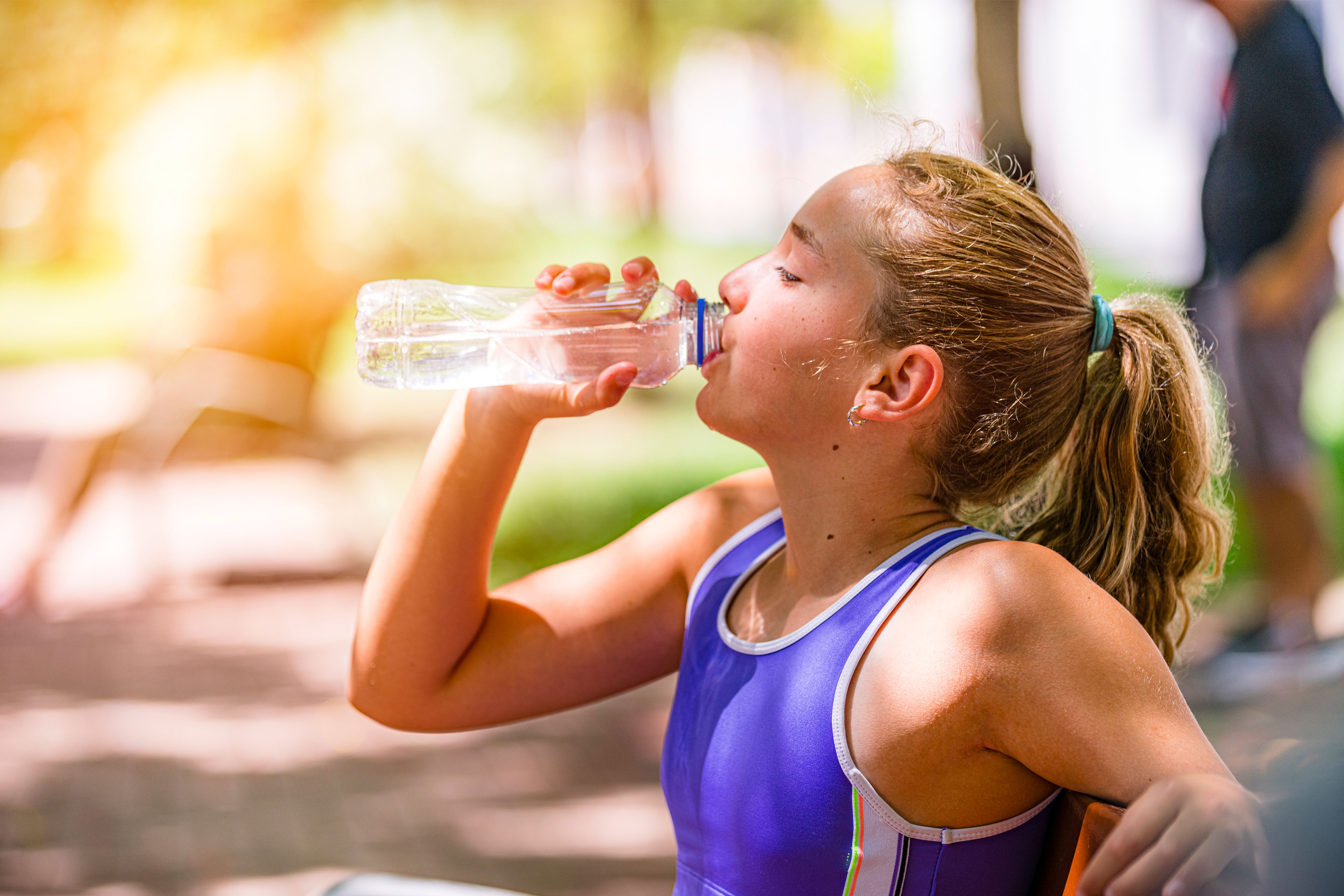Sport in the heat
Staying active in the summer heat
In summer, children and young people are drawn outside when the weather is nice. Outdoor exercise is fun and healthy. However, overexertion in high temperatures can be detrimental to health - this also applies to children and young people. In this article, you will find tips on how to protect yourself and your child from the sun and heat.

How the sun and heat affect the body
Exercise and sporting activities are healthy and good for promoting and developing fitness and motor skills in children and young people - even in summer. When it is hot outside, the body reacts with increased sweating. This is a healthy way for the body to protect itself from overheating.
Children before puberty, however, sweat much less than adults. It also takes much longer for the young body to get used to high temperatures. Parents, coaches and trainers should therefore ensure a sensible and moderate amount of exercise to prevent overheating and overexertion and also remind them to take breaks to drink and recover. Otherwise, there is a risk of dehydration, muscle cramps, heatstroke or circulatory problems, especially with endurance sports.
If your child follows a few rules, however, sporting activities are safe for healthy people, even in summer temperatures.
Sport in summer: important tips for hot days
-
Take in sufficient fluids
As a general rule, drink plenty of fluids to compensate for fluid loss. Small unsweetened units approximately every 15 minutes, whereby the drinks should not be ice cold.
-
Don't forget sun protection
Make sure you wear adequate sun protection with a high sun protection factor. Sun protection includes a hat or cap and sunglasses to protect your eyes.
-
Adjust training times
Strenuous training sessions are best done in the cooler morning or evening hours. The midday heat is taboo!
-
Reduce intensity
If your sporty child is particularly ambitious: slow down their enthusiasm on hot days. The pace and intensity should now be reduced.
-
Search for shadows
If possible, stay out of the blazing sun and seek shade whenever possible
.
-
Sensitize children
Explain to your child how they can listen to their own body. As soon as they feel dizzy or unwell, stop immediately and take a break.
-
Recognize signs
Also important: an adult supervisor should always be present during training so that they can recognize the first signs of overheating.
-
Keeping an eye on ozone pollution
When it is very hot, ozone levels rise and put a strain on the lungs. People with respiratory problems in particular should then avoid strenuous outdoor activities.
How can I recognize symptoms of overexertion?
The boundaries between healthy exhaustion after sporting activities and the onset of overexertion are blurred. That's why it's important to look out for symptoms of exhaustion. This rule always applies, but especially in the heat.
Symptoms of overexertion in the heat can include:
- Muscle cramps
- Nausea
- Vomiting
- Dizziness
- Headaches
- Faster breathing, rapid pulse
In an emergency, this can lead to heatstroke. Warning signs can be:
- The body temperature rises above 40 degrees
- The skin is usually reddened, hot and dry
- The pulse is accelerated and does not calm down
- Cramps and headaches
- Confusion to the point of unconsciousness
Attention: In this case, you should act immediately and call the emergency medical service. A complete collapse of the cardiovascular function may occur. Without medical assistance, there is an acute danger to life!
What to do in an emergency? First aid measures for heat stroke
- Until medical help is on site, move the affected child into the shade or, if possible, into a cooler indoor area.
- Loosen any constricting clothing.
- Lift the child's legs if they are conscious.
- Place the child in the recovery position if they are unconscious.
- Place a damp towel or wrapped cold packs on the overheated body, preferably on the arms and legs as well as the neck and groin.
- Offer lukewarm water if the child is conscious.
Where can we find help and advice
If you suspect heatstroke, you should call an emergency doctor immediately.
- The emergency services can be reached on 112.
- The medical on-call service can be reached on 116117.


